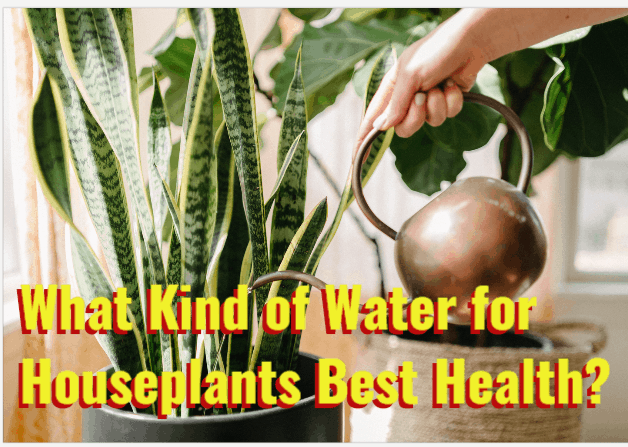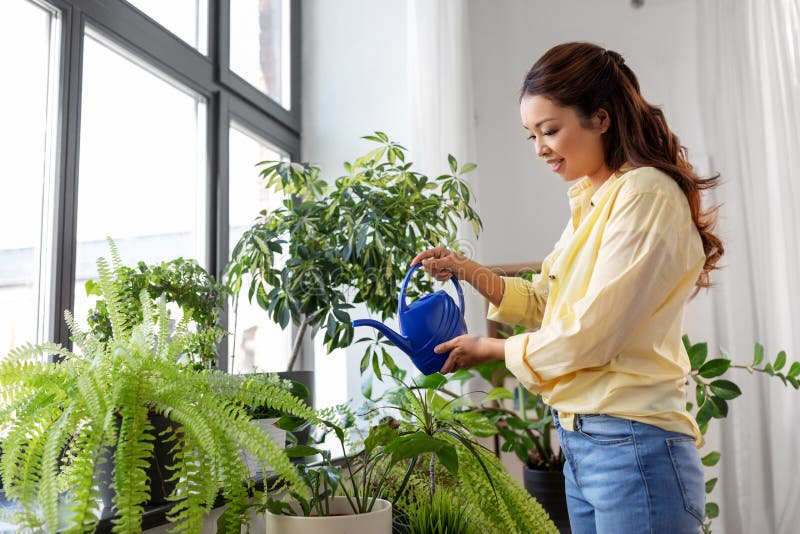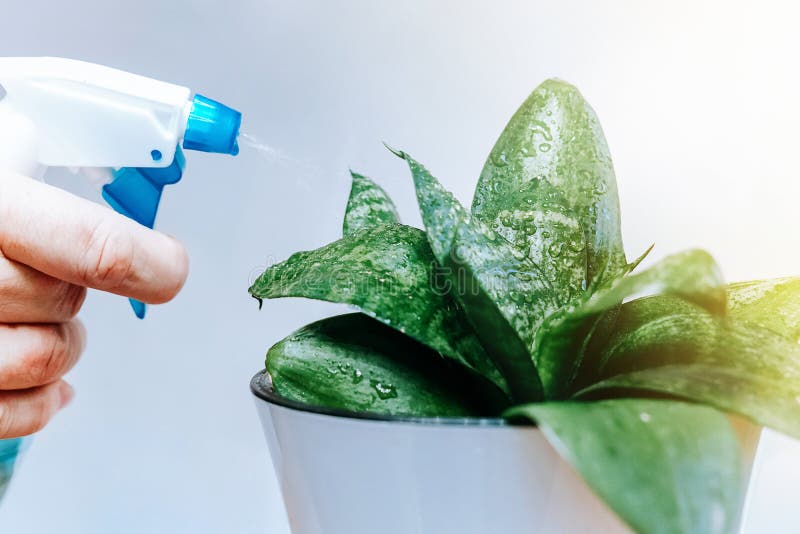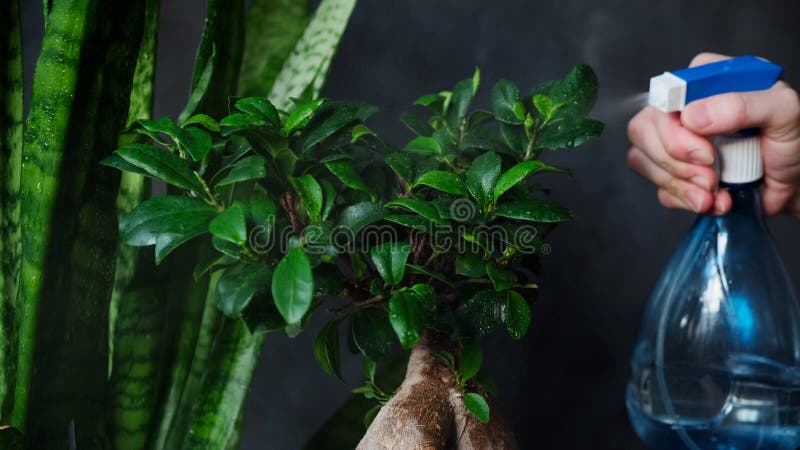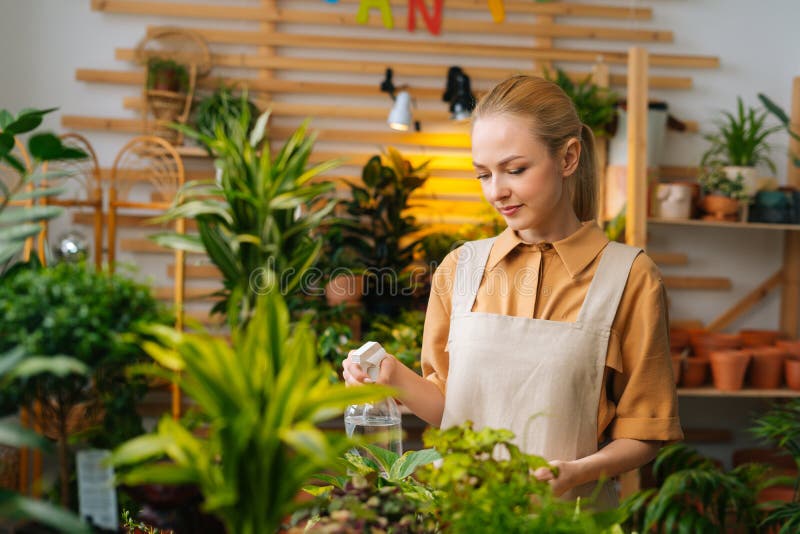HousePlantJoy is supported by our audience. When you purchase through one of our links, we may earn a small affiliate commission. As an Amazon Associate I earn from qualifying purchases. Your cost is not affected.
==================
What Kind of Water for Houseplants- Does it Matter?
Plants are an attractive addition to any household. They’re gorgeous, liven up a room’s decor, and may even help enhance the region’s air quality. However, taking care of houseplants is more complex than some people think.
Water flows in various forms. Each one interacts with and affects humans and plants in unique ways. Instead of utilizing tap water, distilled water or rainfall may be a better alternative for watering some houseplants.
Your choice of water can assist your home plant in reaching its maximum potential while avoiding rotting or fungal illnesses in the future. This complete guide will teach you all you need to know about watering houseplants, so they stay healthy and beautiful.
What Kind Of Water Is The Best For Your Houseplants?
Watering houseplants with Rainwater or distilled water think to be the best option. The worth of the water largely depends on where you reside. Moreover, certain plants are sensitive to minerals or chemicals put into them. Rainwater has the benefit of containing high quantities of oxygen and minerals, whereas distilled water is toxin-free. Tap water contains elevated mineral contents. However, before giving it to your more sensitive species, double-check your town’s annual water quality report.
Impact of Water on Your Houseplants?
Learning the many qualities of water will aid you in making better decisions for your plants.
Hard Water
Limescale buildup on pipes and appliances can cause by hard water. It contains a variety of minerals, including calcium, potassium hydrocarbons, and bicarbonates.
Calcium and magnesium salts build up on top of the soil or the edges of your plant’s pot due to these distinct minerals.
Although these salts are generally innocuous, they can accumulate in the soil. They can affect the minerals and pH of the soil over time, causing severe damage to your plant.
In areas with hard water, washing salt from the soil with rainfall, distilled water, or bottled water is the best approach to safeguard your plant.
Oxygen Content in Water
The transport of oxygen to the root system is critical to the growth of your plant. Plants ought to be grown in well-aerated, less-soggy soils with enough oxygen.
Several studies have shown that high oxygen levels in water cause greater root masses. Moreover, high oxygen results in quicker nutrient absorption, leading your plants to develop more.
When opposed to warm water, cool water has more oxygen, and any water with greater oxygen contains less dissolved minerals. More than any other type of water, Rainwater is known to hold the highest amount of oxygen.
Chlorine in Water
Chlorine or chloramine, which can find in some types of water, can be harmful to your plants’ roots. It has the potential to harm beneficial bacteria as well as other micro-organisms in the plant roots. Chlorine can be poisonous to some houseplants, resulting in brown tips and scars on the leaves.
Types of Water for Houseplants
Tap Water
For the most part, tap water is a given in most households, and having access to it is taken for granted. Because tap water contains minerals, you won’t have to fertilize your plants as much. However, different types of water contain various minerals and compounds, so you should test it to ensure it’s what your plants require. While most plants may give, some are very sensitive and will harm the water’s toxins.
Safely use tap water.
Many people recommend letting the water sit overnight to help clean it through evaporation. However, this is not entirely accurate. Evaporation occurs, but the water evaporates, leading the other chemicals in the water to accumulate much more. You can shower many plants with tap water, but before providing it to your more sensitive plants, verify your area’s yearly water quality report.
Distilled Water
The distillation process is the separation of hydrocarbons and salts from water. Many people believe that distilled water is healthier for plants since it is entirely clean and free of harmful chemicals.
It is particularly true of houseplants with a tiny amount of heavily polluted soil with chemicals and minerals. Distilled water is a gentle sort of water that does not soften with salt. Instead, chemicals and minerals are removed, making them softer.
Plants rinsed with distilled water grow quicker and stronger than those irrigated with tap water in way comparisons. Plants that flushed with distilled clean water generate more leaves and develop faster.
Rain Water
Rainwater is by far the most acceptable source of water for your plants. It contains essential elements for plant growth and will help your plants grow more extensively and more robust than any form of water. There’s a reason why this is the ideal water supply for your plants: it’s what they’d get in their natural environment.
There is no amusement because the plants you cultivate in your house will likely grow wild elsewhere and can hydrate by rain! It’s all-natural, pure, and simple to obtain. It also contains beneficial elements that help plant growth. Rainwater can also collect in buckets or retention barrels. Not to mention, it’s completely free!
How to Water Houseplants Properly
Excessively water is more likely to kill your plants than not enough. To prevent either situation, here’s what you need to understand. There are specific points that you need to consider for the proper watering of your houseplant.
How Much Should You Water?
Because not all plants require the same quantity of water, if you’re unsure how much yours need, look to nature for guidance. Many popular houseplants, such as philodendrons, are native to tropical climates where it rains frequently. These plants often have large leaves that require a lot of water to maintain their appearance. These plants will require more water than plant species like cactus and shrubs, which thrive when the soil dries out between watering.
The time of year might also have an impact. Several houseplants develop more in the spring and early summer, though not as much in the winter months. If your plants aren’t growing as much as they should, reduce the amount of water you give them until they do.
Best Temperature for Watering
When watering houseplants, the ideal temperature is between 18 and 20°C, (68°F) or just below room temperature. Water at this temperature does not induce freezing stress to plant roots and still provides enough levels of dissolved oxygen for plants. Let tap water settle to room temperature for a few hours before using.
Best Time for Watering
It’s time to water your plants if you notice any drooping leaves. However, you don’t want your plants to reach this point since they won’t look lovely and will be less able to fight illnesses. Instead, check on your houseplants once a week to see whether they need water.
Morning watering prefers over evening watering. Any splashes on the leaves will have a better opportunity to dry and evaporate throughout the day when temperatures are warmer. The longer water remains on plant leaves, the greater the chance of disease developing.
Water Generously
When watering your plants, make sure the water reaches all of the roots. To put it another way, water a lot, not a little bit every day, but a lot. Water at the plant base rather than over the blooms and follow the directions on the plant tag. Stop watering when water starts to run from the drainage hole at the bottom of the planter. After that, be sure to drain any extra water from the planter saucer.
How Can I Tell If I’m Overwatering My Indoor Plant?
It might not be easy to distinguish between overwatering and under-watering. In both circumstances, the plant may exhibit withering and yellowing leaves. Here’s a basic rule: if the plant is nice and soft and you detect brown patches or areas of the leaves that become black, it’s overwatered. If the leaves get pale or wrinkled, it’s too dry.
Adopt Bottom Watering
Bottom watering, which involves a plant absorbing water from the bottom rather than the top, is an excellent approach to provide your plants enough water without drowning their leaves. It guarantees that the roots toward the bottom get adequate water, which is difficult to achieve when pouring from the summit.
Ensure Proper Aeration
Because a houseplant lacks the advantages of worms and other organisms to aerate the soil, its caregivers must periodically poke holes in the soil to let the water go where needed. It serves to “part ways dry areas of soil, guarantee even moisture transport and get airflow to the roots.
Try Self Watering Pot
Self-watering pots are highly convenient and save time. There will be no more over-watering or under-watering since the plant will take care of everything. You have to replace the water tank before it becomes dry, which occurs once a month.
Watering Globes, not just for vacations
Many people use watering globes to ensure plants stay healthy during vacations. However, these little decorative beauties offer year-round assistance, too! Used properly, they often continue watering for one to two weeks.
Conclusion
It takes some training to know how to water your houseplants properly. You’ll grow better at caring for your indoor garden the more you do it. Begin with a few types that are difficult to destroy. Then, once you’ve mastered the fundamentals and are more confident in your watering abilities, you may try your hand at a few more complex plants. I hope above mention information about watering the plants will prove beneficial to you. Do share it with others!
Read More:
What plants can live in just water?

